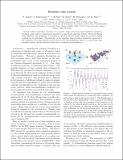Files in this item
Boundary time crystals
Item metadata
| dc.contributor.author | Iemini, F. | |
| dc.contributor.author | Russomanno, A. | |
| dc.contributor.author | Keeling, J. | |
| dc.contributor.author | Schirò, M. | |
| dc.contributor.author | Dalmonte, M. | |
| dc.contributor.author | Fazio, R. | |
| dc.date.accessioned | 2018-06-22T15:30:09Z | |
| dc.date.available | 2018-06-22T15:30:09Z | |
| dc.date.issued | 2018-07-20 | |
| dc.identifier | 253402516 | |
| dc.identifier | 0ece02ad-e80e-40d5-bc3c-032932ff50c5 | |
| dc.identifier | 85050394173 | |
| dc.identifier | 000438680500005 | |
| dc.identifier.citation | Iemini , F , Russomanno , A , Keeling , J , Schirò , M , Dalmonte , M & Fazio , R 2018 , ' Boundary time crystals ' , Physical Review Letters , vol. 121 , no. 3 , 035301 . https://doi.org/10.1103/PhysRevLett.121.035301 | en |
| dc.identifier.issn | 0031-9007 | |
| dc.identifier.other | ArXiv: http://arxiv.org/abs/1708.05014v1 | |
| dc.identifier.other | ORCID: /0000-0002-4283-552X/work/46761173 | |
| dc.identifier.uri | https://hdl.handle.net/10023/14492 | |
| dc.description | This work was supported in part by \Progetti Interni - Scuola Normale Superiore" (A.R.), EU- 691 QUIC (R.F. and A.R.), CRF Singapore Ministry of Education (CPR-QSYNC 692) (R.F.), EPSRC program TOPNES (EP/I031014/1) (J.K.). | en |
| dc.description.abstract | In this work we introduce boundary time crystals. Here continuous time-translation symmetry breaking occurs only in a macroscopic fraction of a many-body quantum system. After introducing their definition and properties, we analyze in detail a solvable model where an accurate scaling analysis can be performed. The existence of the boundary time crystals is intimately connected to the emergence of a time-periodic steady state in the thermodynamic limit of a many-body open quantum system. We also discuss connections to quantum synchronization. | |
| dc.format.extent | 2066881 | |
| dc.language.iso | eng | |
| dc.relation.ispartof | Physical Review Letters | en |
| dc.subject | QC Physics | en |
| dc.subject | DAS | en |
| dc.subject | BDC | en |
| dc.subject | R2C | en |
| dc.subject.lcc | QC | en |
| dc.title | Boundary time crystals | en |
| dc.type | Journal article | en |
| dc.contributor.sponsor | EPSRC | en |
| dc.contributor.institution | University of St Andrews. School of Physics and Astronomy | en |
| dc.contributor.institution | University of St Andrews. Condensed Matter Physics | en |
| dc.identifier.doi | 10.1103/PhysRevLett.121.035301 | |
| dc.description.status | Peer reviewed | en |
| dc.identifier.grantnumber | EP/I031014/1 | en |
This item appears in the following Collection(s)
Items in the St Andrews Research Repository are protected by copyright, with all rights reserved, unless otherwise indicated.

